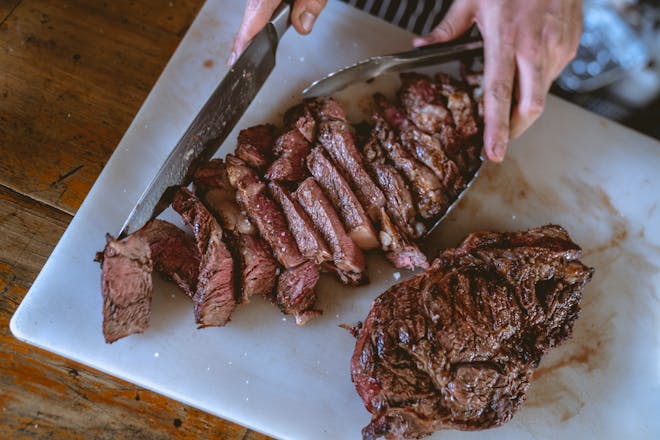Reverse Sear Method: Unlocking the Best Sear Steak
If you’re on a quest to achieve the best sear steak, let’s talk about the reverse sear method, a technique that’s been gaining traction among steak aficionados. This method involves slowly cooking the steak at a low temperature before finishing it off with a high-heat sear. The result? A steak with a perfectly cooked interior and a beautifully seared crust.
Understanding the Reverse Sear Technique
The reverse sear is a game-changer when it comes to cooking steak. Traditional methods may have you sear the meat first and then finish it in the oven, but reversing the process has distinct advantages. By starting with a low and slow cook in the oven, you allow the steak to cook evenly from edge to center, reducing the risk of overcooking while still achieving that desirable, crispy outer sear.
Step 1: The Low-Temperature Cook
Begin by preheating your oven to a low temperature—around 275°F (135°C). Season your steak generously with salt and let it come to room temperature. Place the steak on a rack over a baking sheet and insert a meat thermometer into the thickest part. Cook the steak slowly until it’s about 10-15°F (5-8°C) below your desired final temperature.
Step 2: Resting the Steak
Once your steak reaches the target temperature, remove it from the oven and let it rest on a cutting board. Resting allows the juices to redistribute throughout the meat, ensuring a moist and tender bite. It also provides the perfect opportunity to preheat your skillet for the final sear.
Step 3: The High-Heat Sear
Heat a heavy skillet over high heat until it’s smoking hot. Add a high-smoke-point oil like canola or grapeseed, and carefully place your rested steak in the pan. Sear each side for about 1-2 minutes, or until it develops a dark, crisp crust. For an extra touch of flavor, add butter, garlic, and fresh herbs in the last minute of searing, basting the steak with the aromatic butter.
Tips for the Perfect Reverse Sear Steak
- Choose the right cut: Thicker steaks, such as ribeye or New York strip, are ideal for this method as they provide enough thickness to develop a nice gradient of doneness.
- Use a reliable thermometer: Since precise temperature is key, a good quality meat thermometer is a must to avoid guesswork.
- Don’t skip the rest: Allowing your steak to rest both after the oven and after the sear is crucial for a juicy result.
- Get creative with seasonings: While salt is essential, feel free to experiment with other spices and herbs to create your signature steak flavor.
By mastering the reverse sear, you’ll not only achieve the best sear steak but also impress your guests with your culinary prowess. Remember to let the flavor and texture of the steak shine through, and enjoy the process of perfecting your technique.
